Walking the Naxos Strada, where the streets are paved with marble
Clare Hargreaves pulls on her walking boots to discover a hiking trail in Greece’s Cyclades that supports a more sustainable form of tourism than the usual fly-and-flop
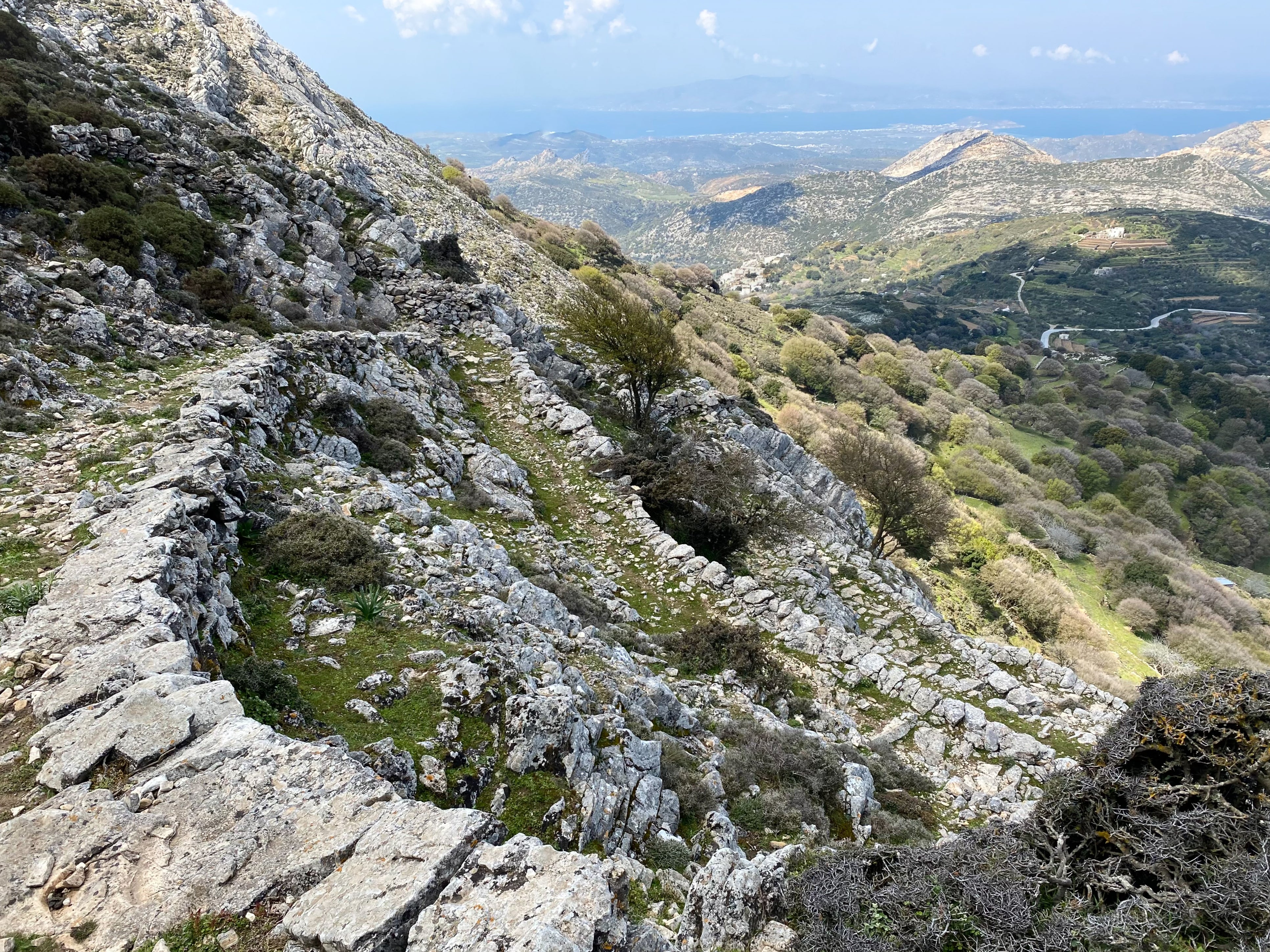
“Follow mule dung and you’ll stay on track, follow goat droppings and you’ll rip yourself to shreds in the scrub,” a shepherd had advised after I got off the bus. As I navigate the rocky terrain, spikes of Jerusalem sage illuminating my way like golden candles, his words come in handy. I’m walking the Naxos Strada, a 52km trail across the Greek island of Naxos, most of it along ancient mulepaths that were once the vital veins connecting its whitewashed villages.
You’ll find mulepaths – kalderimia – on all Greek islands, but those on Naxos have the distinction of often being paved with marble. The stone has been mined here since antiquity, and still is, in quarries which glisten in the Mediterranean sun like vast slabs of feta cheese.
If the trail’s paving is classy, so is its Italianate name. “Strada” reflects Naxos’ three centuries under the Venetians who dubbed its pathways communes stradas. Waymarked with posts and red paint splodges on the dry-stone walls flanking it, the Strada is maintained by a band of enthusiasts who hope it can help preserve Naxos’ precious history and biodiversity. Save Naxos from the bulldozers by walking it, they say.
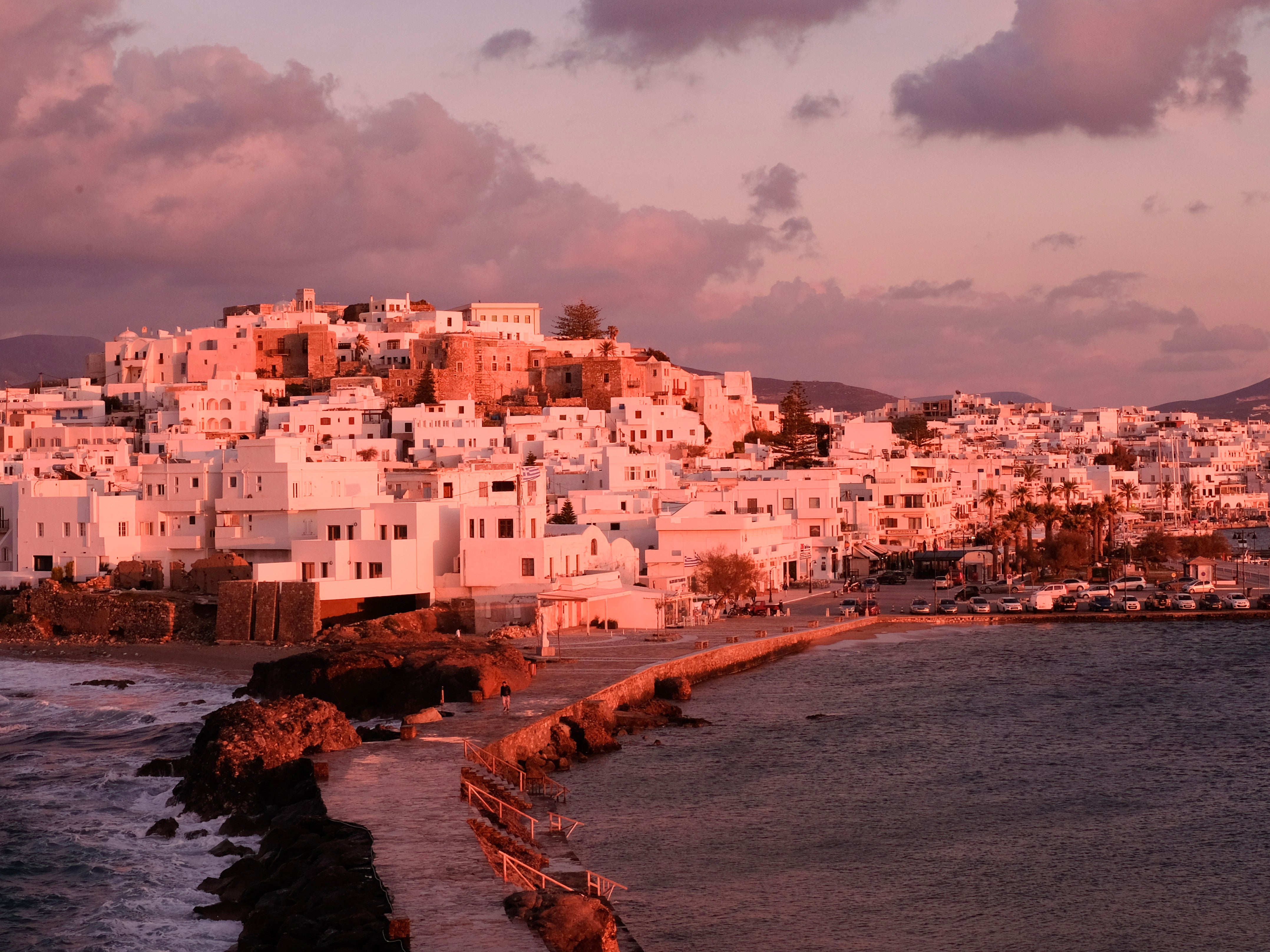
Happily Naxos, the largest and most lushly fertile island of the Cyclades, still has a thriving agricultural life so is less reliant on tourism than many others. This means hikers can experience rural Greek life, whether it’s watching locals pruning their vines, listening to the tinkling of goat bells, or passing through remote mountain villages where old men still worry their beads over shots of fiery raki and nibbles of octopus.
At a leisurely pace, the Strada takes five days. You could find lodgings along the way, but Naxos’ main town, known simply as Hora (Town), with its maze of whitewashed sugar-cube houses clustered around a fortified Venetian castle, is so enchanting that using it as a base seems a no brainer. Unlike many other Greek islands, Naxos is large enough to have buses which can take you to the start of each leg. Provided you don’t mind giggles and gum, the 7.30am school bus is a godsend.
Read more on Greece travel:
I begin my trek at the endearingly named Saint Mamas, a 10th-century basilica standing solitary among the olives. It’s one of thousands of churches and chapels that are scattered across the island like snowflakes, often perched in the most impossible places as proof of their benefactors’ devotion. Most are Persil-white, but this one, hewn from local stone, is unpainted. A conservator sneaks me in to view its faded frescoes.
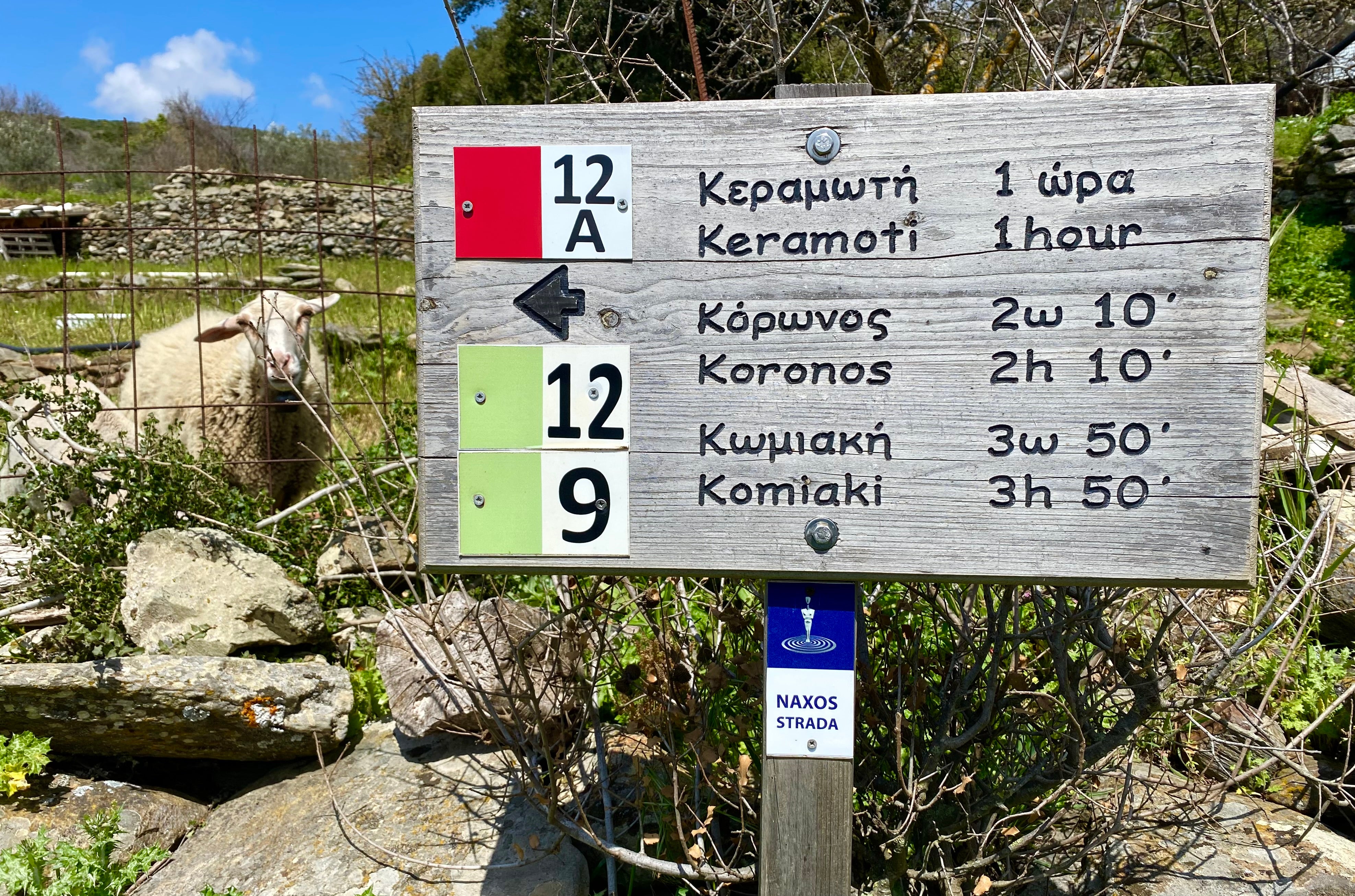
I’m soon on the square of Lower Potamia, one of three stream-fed villages hidden among orchards of orange trees whose fruits I pray will drop onto my path (sadly they never do). At Upper Potamia I make a brief detour north across wild scrub dotted with bee orchids and ocean-blue lupins to view one of the island’s kouros, supersized marble statues depicting idealised youths that were sculpted some 2,500 years ago. The five-metre naked male has an almost modernist feel, perhaps because statues were only roughly sculpted inside the quarry before being transported to their final destination where they’d be refined. Moving these weighty sculptures was challenging and this poor youth’s legs got broken. So he was abandoned among the asphodels, lonesome and legless, to stare at the stars.
Following my thyme-scented trail northeastwards, the mountain villages feel increasingly real
Back on the Strada, I climb to a mountain-top Venetian fortress. It towers over a landscape strewn with vast boulders seemingly hurled there by Zeus, who gives his name to Naxos’ highest peak, menacingly grey, ahead. Then it’s down to former capital Halki, with its handsome neo-classical villas, tower houses and what must be one of Greece’s most enchanting platías (squares). Resisting the goat stew at Yiannis’ taverna, I grab a spanakopita from the bakery and head to Halki’s family-run distillery for a tot of liqueur. It’s made from the leaves of island-grown kitron, a citrus fruit shaped like a rugby ball. It’s tasty, if predictably sweet.
Following my thyme-scented trail northeastwards, the mountain villages feel increasingly “real”. In Filoti, sheltering under Mount Zeus, farmers discuss lamb prices in the kafenions as a truck selling potatoes hoots its way up the central street. I buy some worryingly named Arseniko, a Naxian sheep and goats’ cheese which, far from being toxic, turns out to be as punchy as Parmesan. (The name, I discover, means “male”).
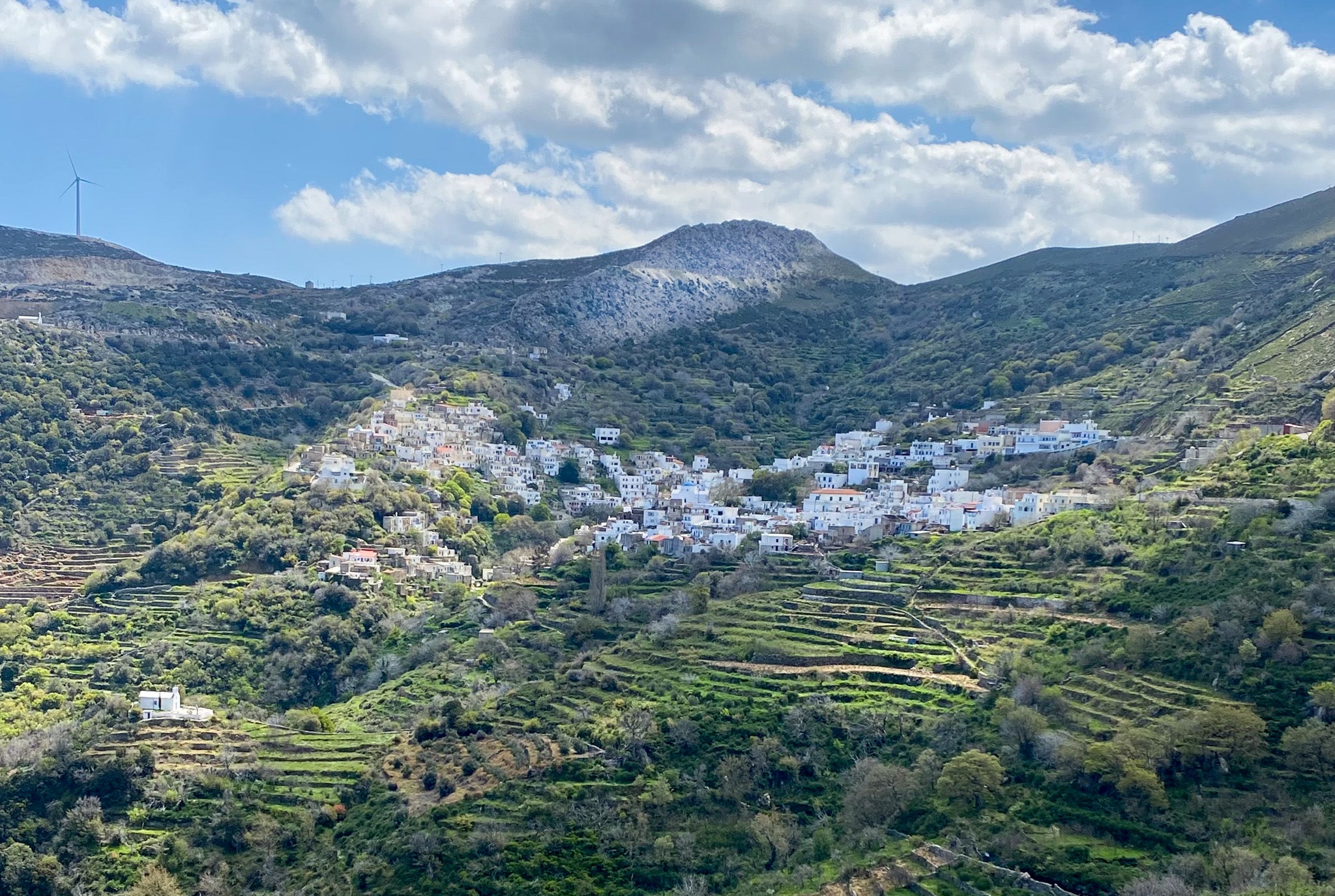
Passing a deserted monastery and more fresco-daubed chapels, I reach Apiranthos, cascading down the stony flanks of Mount Fanari. Its marble-paved streets are flanked by Venetian mansions with ironwork balconies. Cretans took refuge here in the 1700s to escape Turkish domination but today Apiranthos is known for its musicians and writers. In miraculously remote Koronos, I collapse into the square’s vine-shaded taverna for a welcome plate of gigantes beans.
My final stretch zigzags down to seaside Apollonas which glistens in the distance. I weave between citrus-green mounds of spiny spurge resembling giant pin cushions. Getting lost is all part of the experience, but the sun’s sinking so I’ve no time to lose. Thankfully paint splodges and sun-parched mule droppings reassure. Then comes the moment I’ve been looking forward to – a dip in the Aegean, and a glass of Naxian wine. Here’s to mules, marble and impossible chapels.
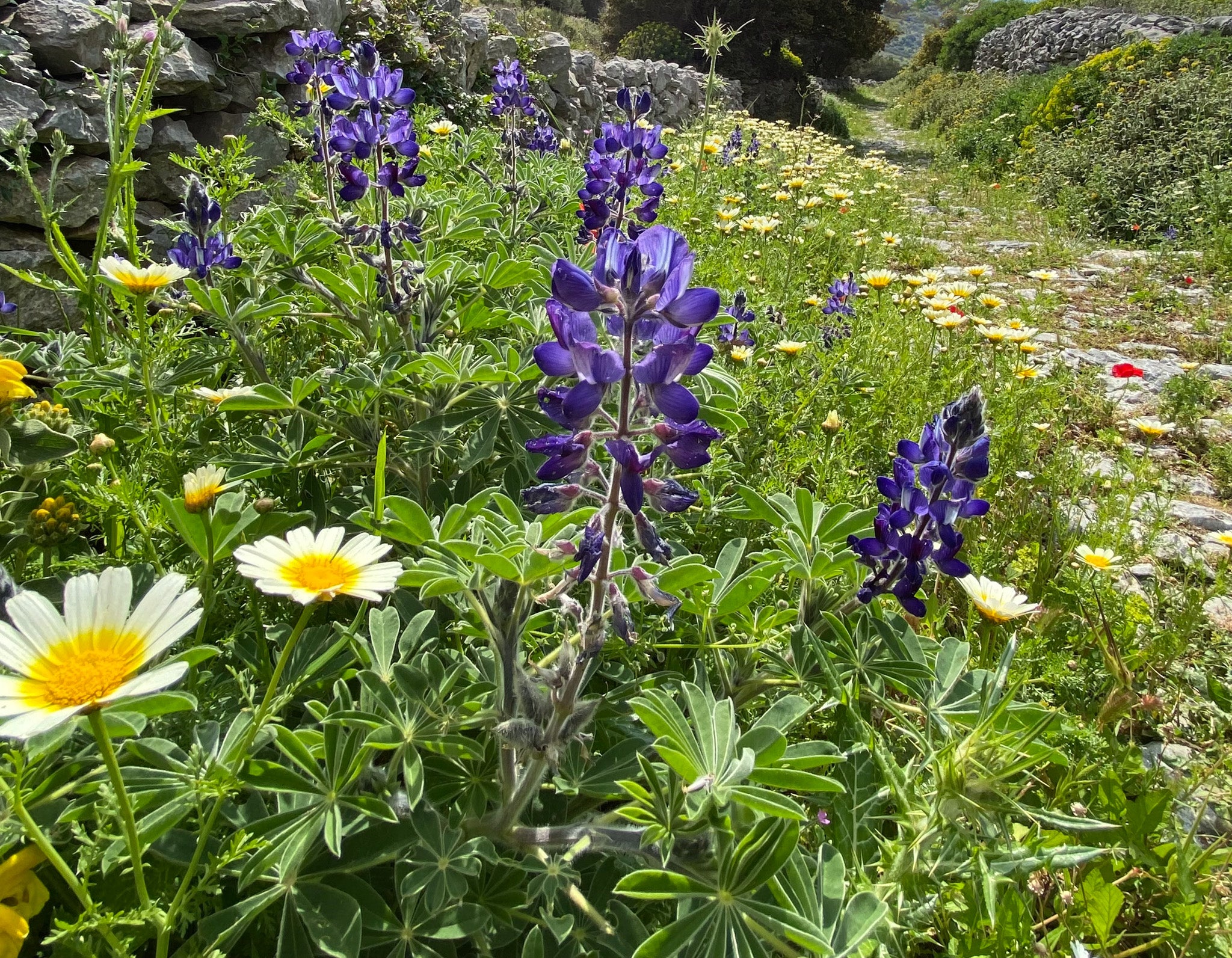
Travel Essentials
Getting there
Ferries sail around four times daily from Piraeus, or fly to Santorini and catch a ferry from there.
Staying there
Chateau Zevgoli, hidden in the heart of old Naxos town, is a charming base. apollonhotel-naxos.gr
Read more of our best Greece islands hotel reviews
Join our commenting forum
Join thought-provoking conversations, follow other Independent readers and see their replies
Comments